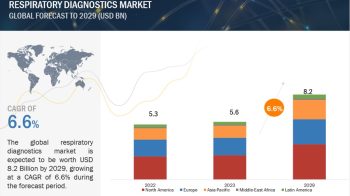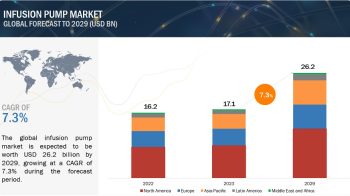Wearable healthcare devices are becoming increasingly popular to monitor and improve health. These devices are typically worn on the body and measure biometric data such as heart rate, body temperature, and other vital signs. They can also be used to track activity levels and provide real-time feedback to help users become more aware of their health. Wearable healthcare devices are becoming increasingly sophisticated, allowing for more accurate and detailed data collection and analysis. They can be used to monitor chronic conditions, provide early warning signs of health issues, and allow for more accurate diagnoses and treatment plans. These devices can also be used to track fitness progress and provide incentives for healthier lifestyles.
Wearable Healthcare Devices and the Future Trends
The healthcare industry is increasingly looking to wearable technology to power devices that are becoming more sophisticated and powerful. Wearable healthcare devices provide a wide range of benefits, including monitoring patient health, providing real-time data, and connecting with other devices.
Future trends in wearable healthcare technology include more sophisticated devices, more personalized care, and better data analysis. Devices are becoming more interactive and providing more comprehensive information to healthcare providers. Wearable devices are also becoming more user-friendly and better able to integrate with other systems.
The future of wearable healthcare technology will also involve more sophisticated analytics. Algorithms and machine learning can be used to help healthcare providers better understand and analyze patient data, leading to better decisions and outcomes for patients. Additionally, wearable healthcare technology can be used to help with preventative care and early diagnosis of conditions.
Finally, the future of wearable healthcare technology will include more customization and personalization. Advanced sensors and AI-driven algorithms can be used to provide personalized feedback to patients and better tailor treatments to individual needs. Additionally, wearables can be used to provide personalized coaching and guidance to help patients stay on track with their health goals.
Market Overview of Wearable Healthcare Devices
Wearable healthcare devices are one of the most rapidly growing segments of the healthcare technology market. Wearable healthcare devices are used to monitor and track a variety of health and fitness metrics such as heart rate, blood pressure, sleep patterns, and activity levels. These devices can be used both in the home and in the hospital setting.
The global wearable healthcare devices market is expected to grow at a CAGR of 13.2% from 2021 to 2026 and is projected to reach USD 30.1 billion by 2026. Factors such as the increasing prevalence of chronic diseases, the growing elderly population, and rising awareness about the benefits of self-monitoring and tracking of health are driving the growth of the global wearable healthcare device market. Additionally, technological advancements, growing investments from venture capitalists, and government initiatives are also boosting the growth of the global wearable healthcare device market.
However, the high cost of devices, the lack of awareness about the usage of these devices, and the lack of data accuracy and interoperability are some of the major factors restraining the growth of the global wearable healthcare device market.
The report provides a comprehensive analysis of the global wearable healthcare device market, segmented by product type, application, end user, and region.
Related News
https://www.prnewswire.com/news-releases/wearable-healthcare-devices-market-worth-30-1-billion-by-2026–exclusive-report-by-marketsandmarkets-301437839.html


